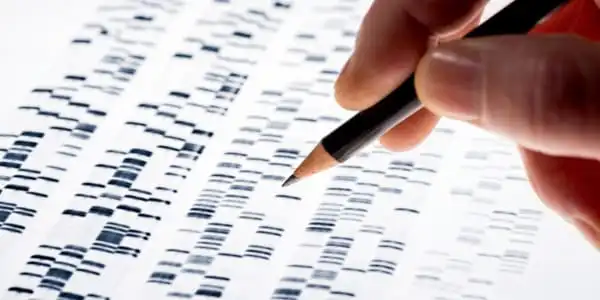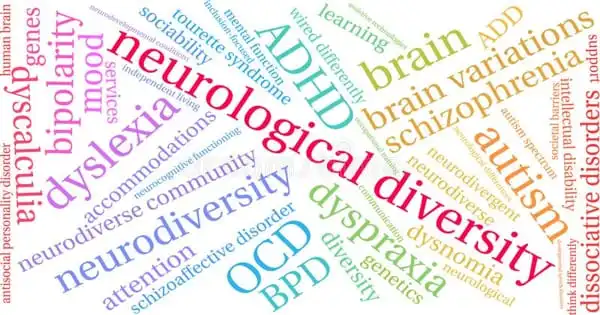Neurodevelopmental disorders are problems that are primarily connected with the functioning of the nervous system and brain. Attention-deficit/hyperactivity disorder (ADHD), autism, learning disabilities, intellectual disability, conduct problems, cerebral palsy, and vision and hearing impairments are examples of neurodevelopmental disorders in children. Language and speech issues, motor skills, behavior, memory, learning, and other neurological processes can all occur in children with neurodevelopmental disorders.
After discovering a relationship between a tumor suppressor gene and a novel neurodevelopmental condition, Australian researchers found a new neurodevelopmental disorder. The multinational study partnership, lead by the Murdoch Children’s Research Institute (MCRI) and published in the American Journal of Human Genetics, linked a known tumor suppressor gene to a new neurodevelopmental disease, putting an end to the diagnostic journey for 32 families worldwide.
Clinical classifications, epidemiology, genetics, and protein–protein interactomes of neurodevelopmental diseases such as intellectual disability, autism spectrum disorder, and schizophrenia lack specific boundaries. This throws into doubt the conventional category disease concepts’ applicability.
Variations in the FBXW7 gene were linked to the newly identified disorder, which causes mild to severe developmental delay, intellectual disability, hypotonia, and gastrointestinal difficulties, according to the study.
FBXW7 now joins a rapidly growing list of intellectual disability/autism spectrum disease genes implicated in problems that impair nervous system development, leading to abnormal brain function, affecting emotion, learning ability, self-control, and memory.
Dr. Sarah Stephenson
According to Dr Sarah Stephenson of Murdoch Children’s Research Institute, because the FBXW7 gene regulates the life-cycle of cells, cell growth, and survival, the research team hypothesized that abnormal cell proliferation during brain development may underpin the broad spectrum of brain abnormalities identified in this new disorder.
“FBXW7 now joins a rapidly growing list of intellectual disability/autism spectrum disease genes implicated in problems that impair nervous system development, leading to abnormal brain function, affecting emotion, learning ability, self-control, and memory,” she added.
The study used cutting-edge diagnostic tools, genomic sequencing and global data sharing platforms to identify 35 people, aged 2-44 years, from 32 families in seven countries harbouring the FBXW7 gene, which had variants that were associated with the never-before described neurodevelopmental syndrome.
Almost all of those impacted experienced developmental delay and intellectual disability ranging from mild to severe, 62% had decreased muscle tone, 46% had feeding issues and constipation, and 23% had seizures. Brain MRI also revealed subtle anatomical changes in the cerebellum, nerve fibers, and white matter.

The researchers next decreased the gene’s expression in a fly model, which impaired the flies’ capacity to jump in response to a stimulus. This supported the hypothesis that the 28 FBXW7 mutations were the cause of the disease. It also solidified the gene’s crucial function in development in general, and the brain in particular.
Professor Tiong Tan of Murdoch Children’s Research Institute, who is also a clinical geneticist at Victorian Clinical Genetics Services (VCGS), said the findings demonstrated the power of undiagnosed disease programs that use new genomic sequencing technologies and international data sharing and collaboration to bring diagnoses to children and families who have been seeking answers for many years.
Rare Diseases Now (RDNow) has built a pathway for children who remain unidentified following a genomic test such as exome sequencing, drawing on the research and clinical experience at MCRI and VCGS.
When complex genetic and environmental variables interact to alter brain development, neurodevelopmental disorders occur. In some circumstances, we can identify the hereditary and environmental components. We don’t in many circumstances. Neurodevelopmental problems are more likely to run in families. The father may have a learning issue, and his son may suffer from ADHD. A brother may have DLD, whereas his sister may have autism. This shows that various neurodevelopmental diseases are caused by the same factors. Although experts are working on it, no one has pinpointed the precise origins of the brain dysfunctions that contribute to DLD.
“The clinical features are so variable with this neurodevelopmental disorder that in some cases it would have been difficult to diagnose without the genomic tools and associated expertise,” Professor Tan said.
“The diagnosis has provided families with closure and certainty, will personalize clinical care for each affected individual, and has disclosed hereditary and reproductive risks. Because it is a dominant condition, a person who has it has a 50/50 chance of passing it on to each of their offspring. Those affected by this diagnosis will be able to make decisions regarding their reproductive possibilities as a result of this diagnosis.”
Professor Tan stated that the next stage would be to test these findings in human stem cells, which would then be engineered into brain cells for laboratory research, in order to gain a better knowledge of how the brain was damaged in this condition.





